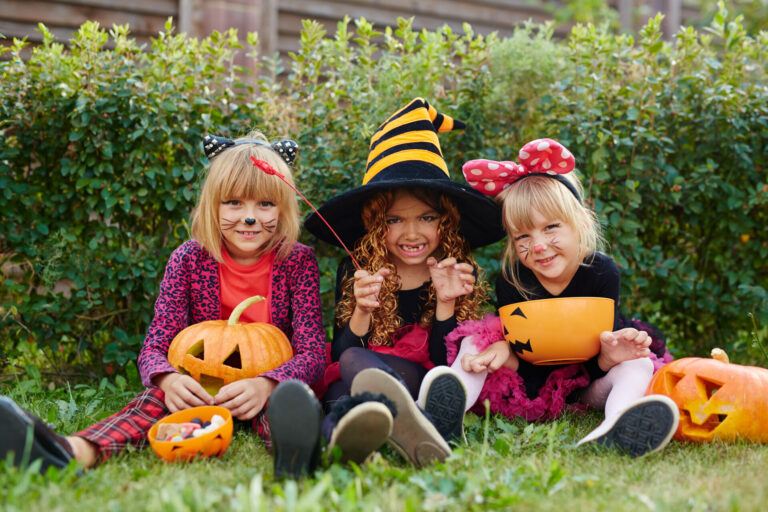Growth mindset is a buzz-phrase these days. Caregivers and parents want it for their children. Teachers want it for their students. Employers want it for their employees. The problem is that growth mindset is not inherent. People need to learn growth mindset. But how does that happen? Acquisition of growth mindset occurs through intention and application.
Growth mindset requires a shift in perspective. It requires accepting and even welcoming imperfection (Good Grief, 2022). It necessitates not only accepting struggle but normalizing it (American University School of Education, 2022). It shifts the focus from results to process. It celebrates planning and replanning (Prieur, 2022). The shift is toward balance, as with the Cognitive Behavioral Therapy (CBT) skill of reframing (Harris, n.d.), or the Trust-Based Relational Intervention (TBRI) skill of re-dos (Texas Baptist Children’s Home, 2017). A mindset shift requires practice, though.
What are some places to practice growth-mindset? Both children and adults can practice growth mindset in the classroom, focusing on what they have not learned “yet,” rather than what they do not know (American University School of Education, 2020). They can set goals and work toward them, recognizing that they are making progress, even if not yet reaching the goal. Growth mindset requires some embracing of challenge, even if a bit uncomfortable (Proud to Be Primary, n.d.). This challenge could occur in the classroom, in the workplace, at home, in the arts, or in sports, just to name a few. Really, challenge can be embraced anywhere!
Activities that could provide opportunities to enhance growth mindset are plentiful. Books can reinforce the concept and show its benefits (Stakke, 2023). Arts and crafts, including projects like origami provide room for growth. Games like escape rooms can lead to creative problem solving. Coding and robotics almost inevitably require growth mindset. Projects that are cooperative in nature allow for relational growth, as well as for co-regulation and modeling of growth mindset from those further advanced in its practice (American University School of Education, 2020; Good Grief, 2022; Proud to Be Primary, n.d.). Envisioning, or even drawing or modeling a hopeful future, or future self can be helpful (Teller, 2020). The only wrong way to practice growth mindset is to not practice, that is, to have a fixed mindset.
Growth mindset certainly will not fix all the world’s ills. It always requires work, as growth mindset cannot be perfected. The benefits of growth mindset, however, are a myriad, so getting started on improvement is a great step to take!
Lecturas recomendadas
Growth mindset is a buzz-phrase these days. Caregivers and parents want it for their children. Teachers want it for their students. Employers want it for their employees. The problem is that growth mindset is not inherent. People need to learn growth mindset. But how does that happen? Acquisition of growth mindset occurs through intention and application.
Growth mindset requires a shift in perspective. It requires accepting and even welcoming imperfection (Good Grief, 2022). It necessitates not only accepting struggle but normalizing it (American University School of Education, 2022). It shifts the focus from results to process. It celebrates planning and replanning (Prieur, 2022). The shift is toward balance, as with the Cognitive Behavioral Therapy (CBT) skill of reframing (Harris, n.d.), or the Trust-Based Relational Intervention (TBRI) skill of re-dos (Texas Baptist Children’s Home, 2017). A mindset shift requires practice, though.
What are some places to practice growth-mindset? Both children and adults can practice growth mindset in the classroom, focusing on what they have not learned “yet,” rather than what they do not know (American University School of Education, 2020). They can set goals and work toward them, recognizing that they are making progress, even if not yet reaching the goal. Growth mindset requires some embracing of challenge, even if a bit uncomfortable (Proud to Be Primary, n.d.). This challenge could occur in the classroom, in the workplace, at home, in the arts, or in sports, just to name a few. Really, challenge can be embraced anywhere!
Activities that could provide opportunities to enhance growth mindset are plentiful. Books can reinforce the concept and show its benefits (Stakke, 2023). Arts and crafts, including projects like origami provide room for growth. Games like escape rooms can lead to creative problem solving. Coding and robotics almost inevitably require growth mindset. Projects that are cooperative in nature allow for relational growth, as well as for co-regulation and modeling of growth mindset from those further advanced in its practice (American University School of Education, 2020; Good Grief, 2022; Proud to Be Primary, n.d.). Envisioning, or even drawing or modeling a hopeful future, or future self can be helpful (Teller, 2020). The only wrong way to practice growth mindset is to not practice, that is, to have a fixed mindset.
Growth mindset certainly will not fix all the world’s ills. It always requires work, as growth mindset cannot be perfected. The benefits of growth mindset, however, are a myriad, so getting started on improvement is a great step to take!
Lecturas recomendadas
References
American University School of Education. (2020, December 10). How to foster a growth mindset in the classroom. https://soeonline.american.edu/blog/growth-mindset-in-the-classroom/
Good Grief. (2022, May 13). How to help students develop a growth mindset. https://good-grief.org/ways-to-develop-a-growth-mindset/
Harris, S. (n.d.). Reframing our thoughts to have positive feelings. All Health Network. https://www.allhealthnetwork.org/colorado-spirit/reframing-our-thoughts-to-have-positive-feelings/
Prieur, J. (2022, May 24). 10 ways teachers can instill a growth mindset in students. Prodigy. https://www.prodigygame.com/main-en/blog/growth-mindset-in-students/
Proud to Be Primary. (n.d.). Teaching growth mindset in the classroom with 9 powerful strategies. https://proudtobeprimary.com/teaching-a-growth-mindset-in-the-classroom/
Staake, J. (2023, January 27). 20 growth mindset activities to inspire confidence in kids. We are Teachers. https://www.weareteachers.com/growth-mindset/
Teller, S. (2020, May 7). Developing a growth mindset after trauma. Sara E. Teller. https://sarateller.com/developing-a-growth-mindset-after-trauma/
Texas Baptist Children’s Home. (2017, July 26). What is TBRI? | Part 4: The correcting principles. https://www.tbch.org/blog/2017/07/26/what-is-tbri-part-4-the-correcting-principles/
References
American University School of Education. (2020, December 10). How to foster a growth mindset in the classroom. https://soeonline.american.edu/blog/ growth-mindset-in-the-classroom/
Good Grief. (2022, May 13). How to help students develop a growth mindset. https://good-grief.org/ways-to-develop-a-growth-mindset/
Harris, S. (n.d.). Reframing our thoughts to have positive feelings. All Health Network. https://www.allhealthnetwork.org/ colorado-spirit/reframing-our-thoughts-to-have-positive-feelings/
Prieur, J. (2022, May 24). 10 ways teachers can instill a growth mindset in students. Prodigy. https://www.prodigygame.com/main-en/blog/growth-mindset-in->students/
Proud to Be Primary. (n.d.). Teaching growth mindset in the classroom with 9 powerful strategies. https://proudtobeprimary.com/teaching-a-growth-mindset-in-the-classroom/
Staake, J. (2023, January 27). 20 growth mindset activities to inspire confidence in kids. We are Teachers. https://www.weareteachers.com/growth-mindset/
Teller, S. (2020, May 7). Developing a growth mindset after trauma. Sara E. Teller. https://sarateller.com/developing-a-growth-mindset-after-trauma/
Texas Baptist Children’s Home. (2017, July 26). What is TBRI? | Part 4: The correcting principles. https://www.tbch.org/blog/2017/07/26/ what-is-tbri-part-4-the-correcting-principles/




